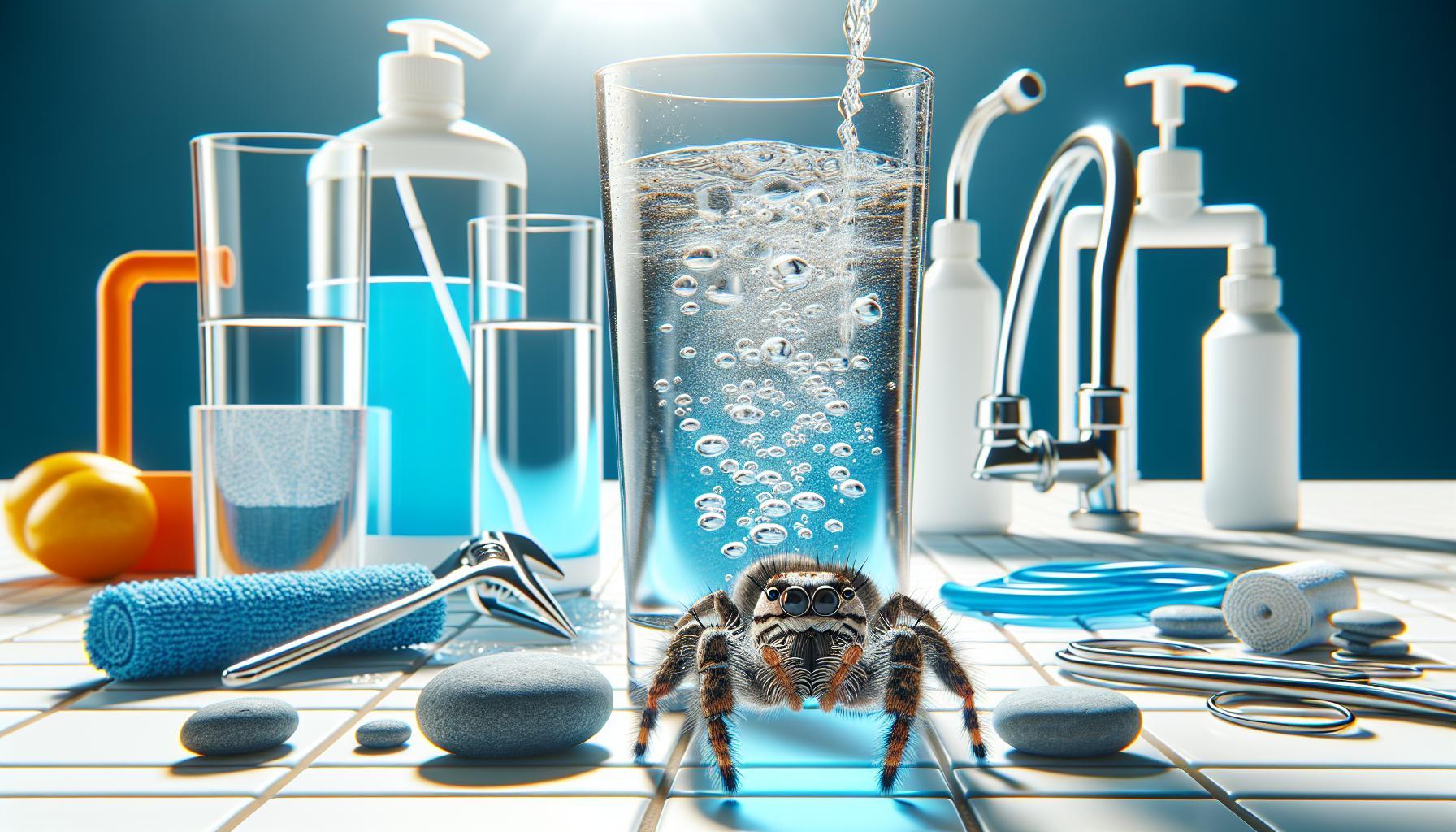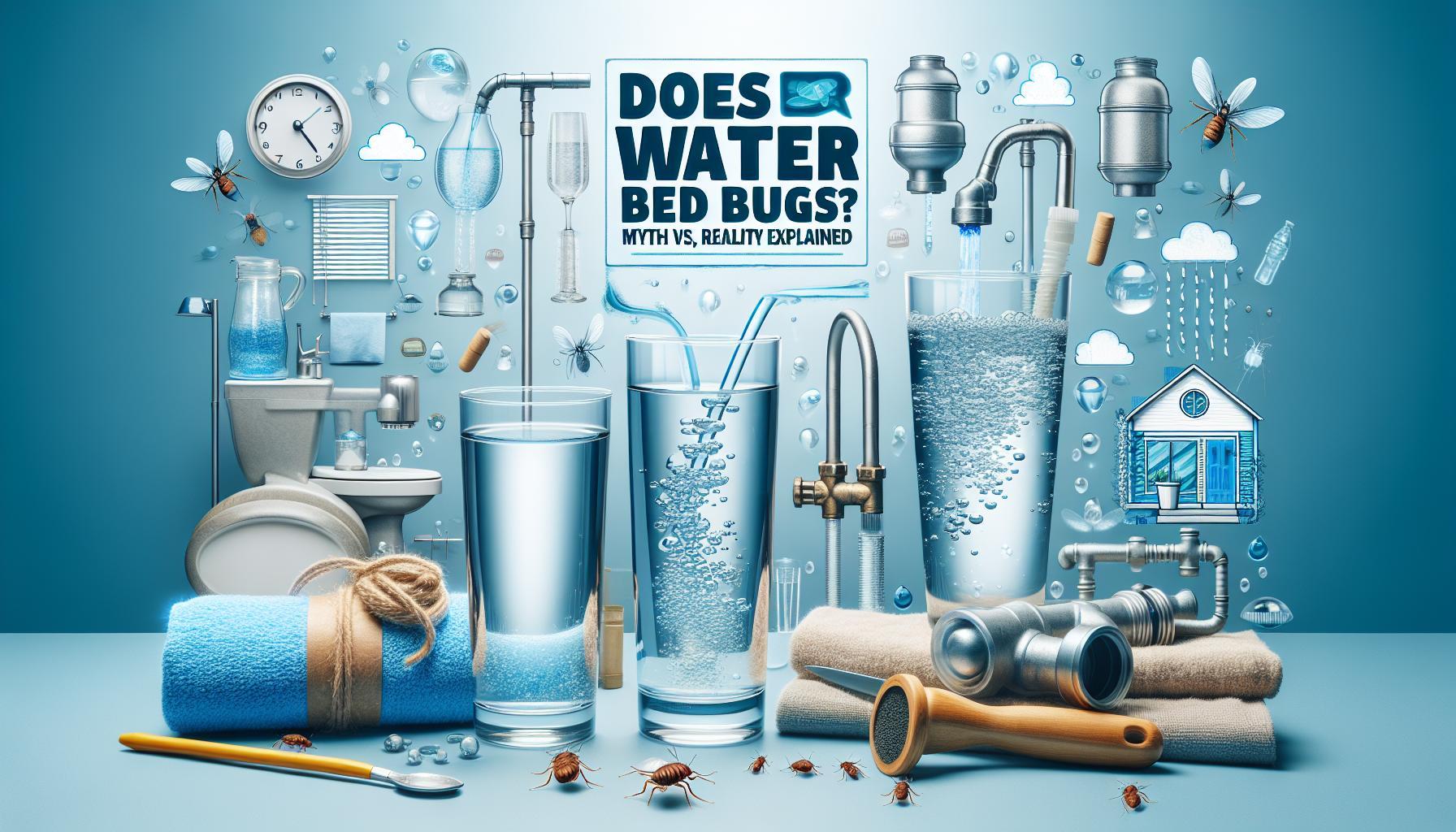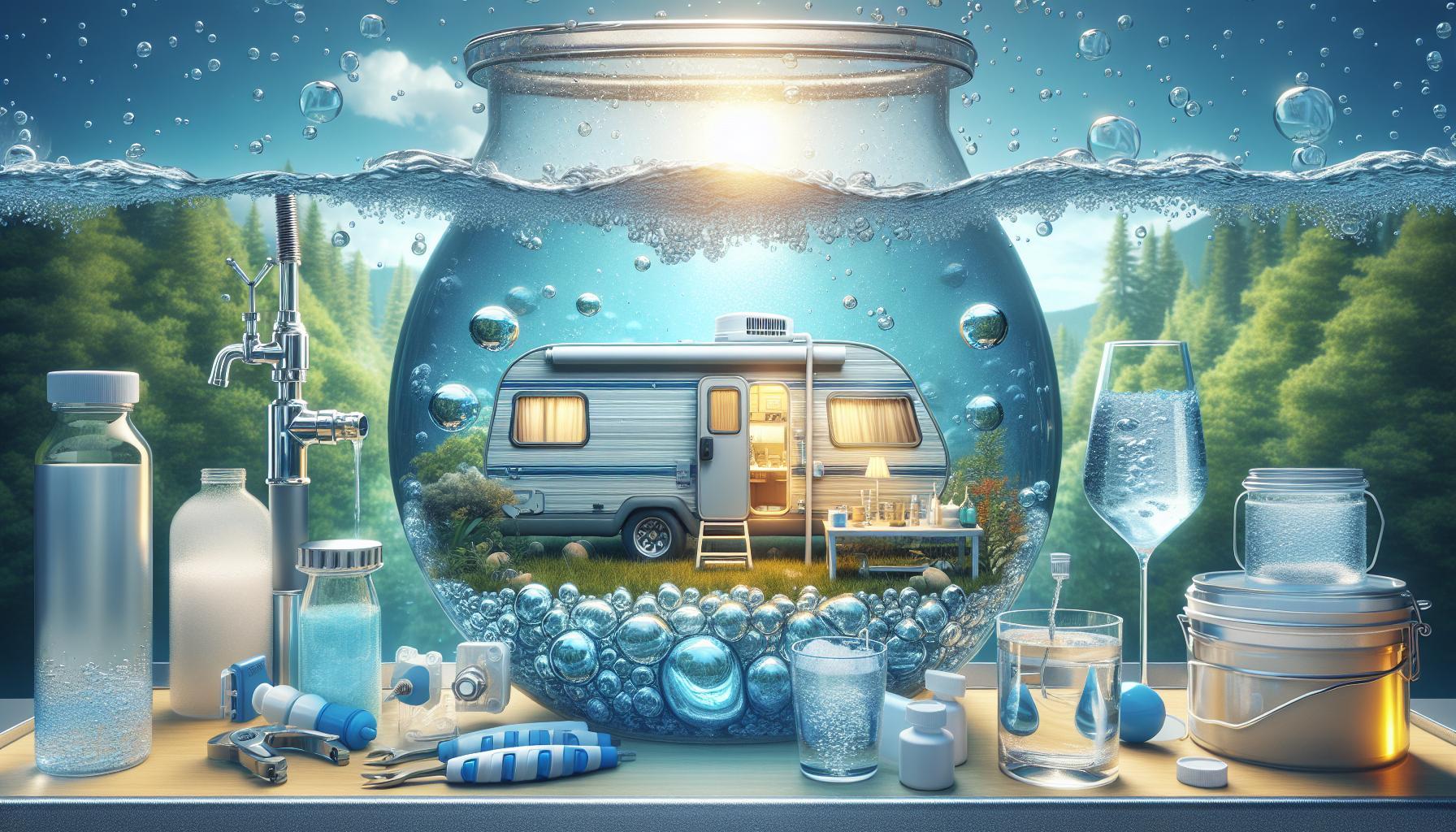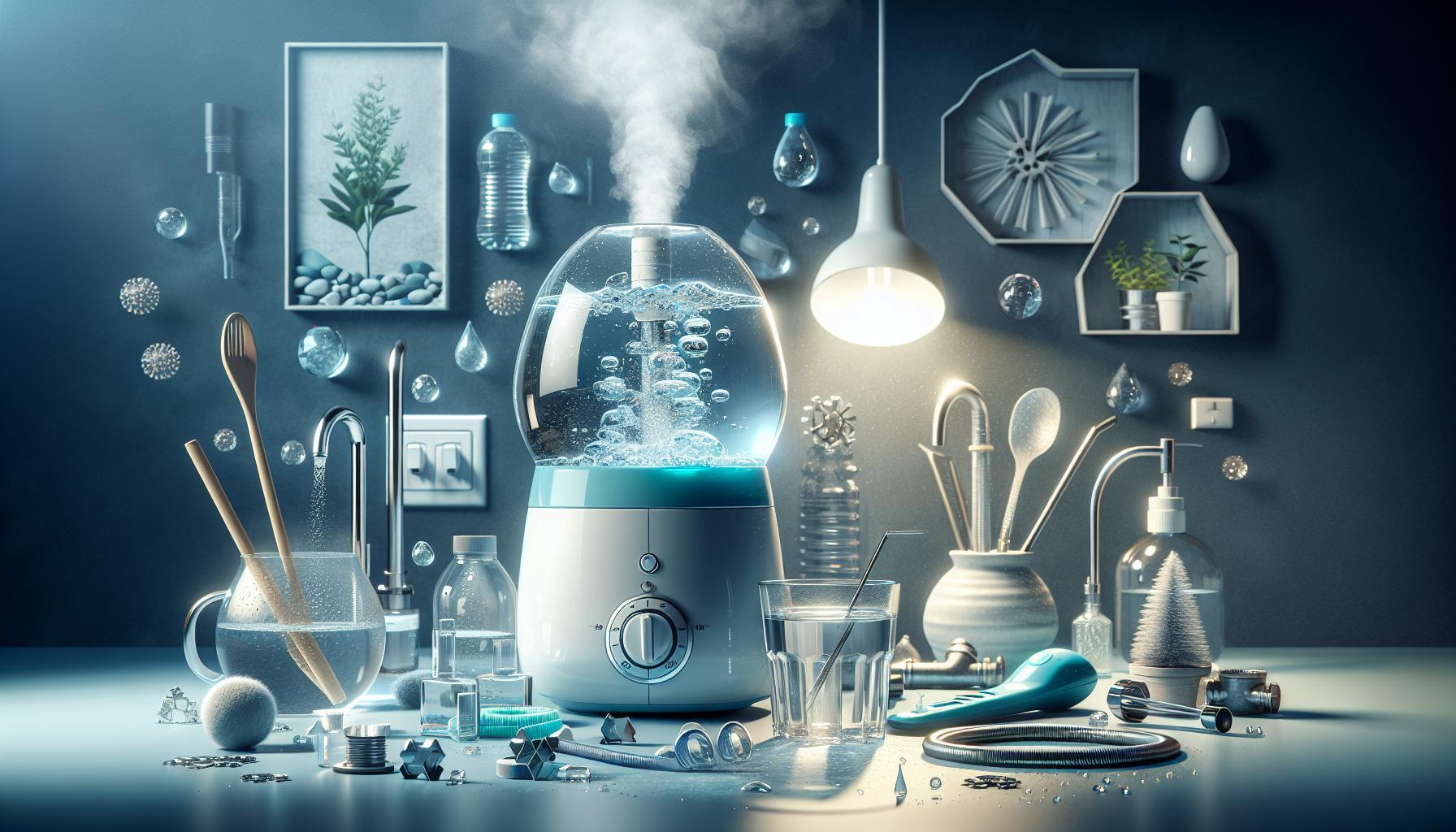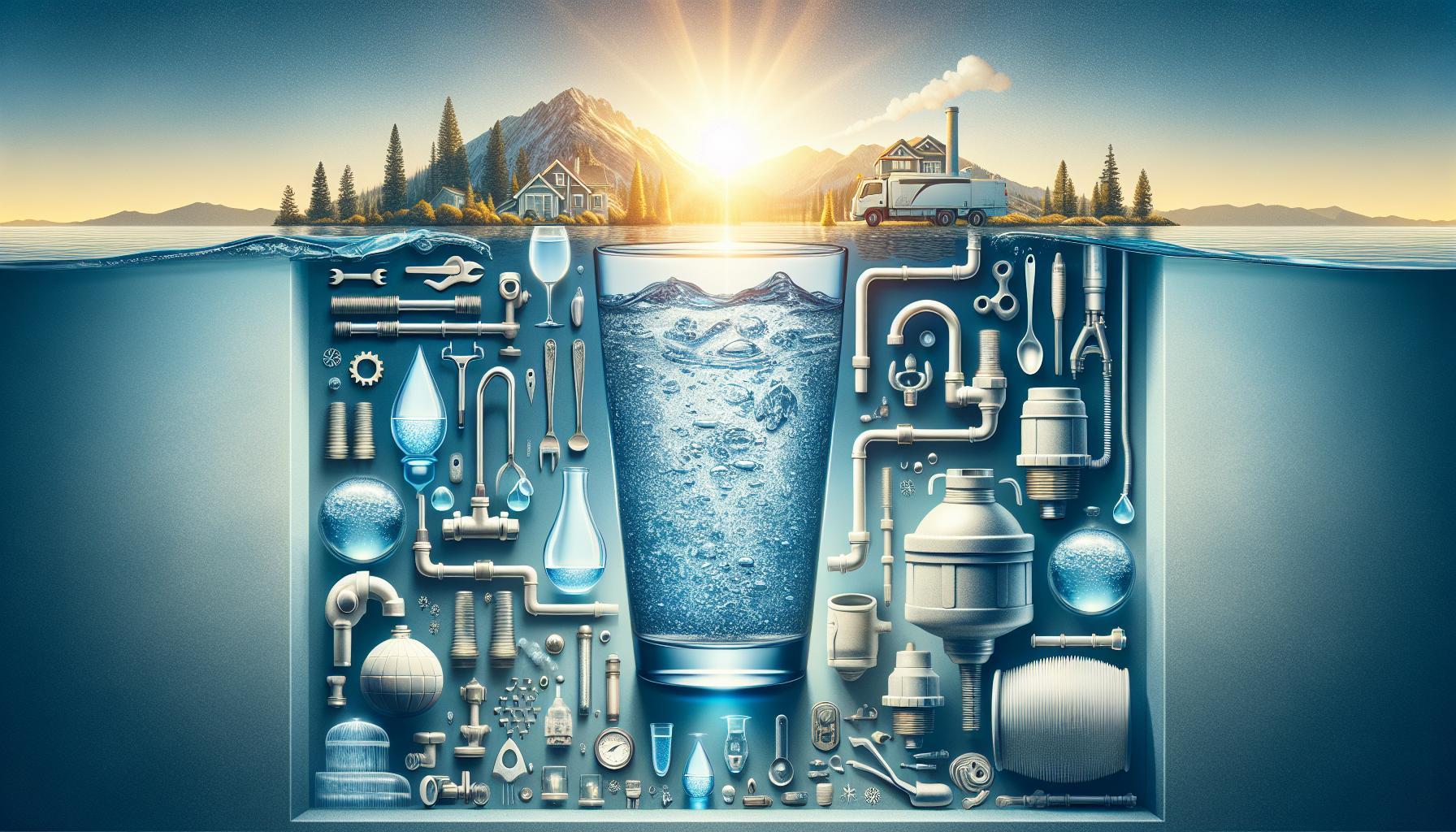Understanding the hydration needs of jumping spiders is essential for their health and vitality. While these fascinating creatures thrive in various environments, proper care—including hydration—plays a crucial role in their well-being. This article explores whether these agile arachnids need water and offers practical tips for owners to ensure their pets remain hydrated and happy.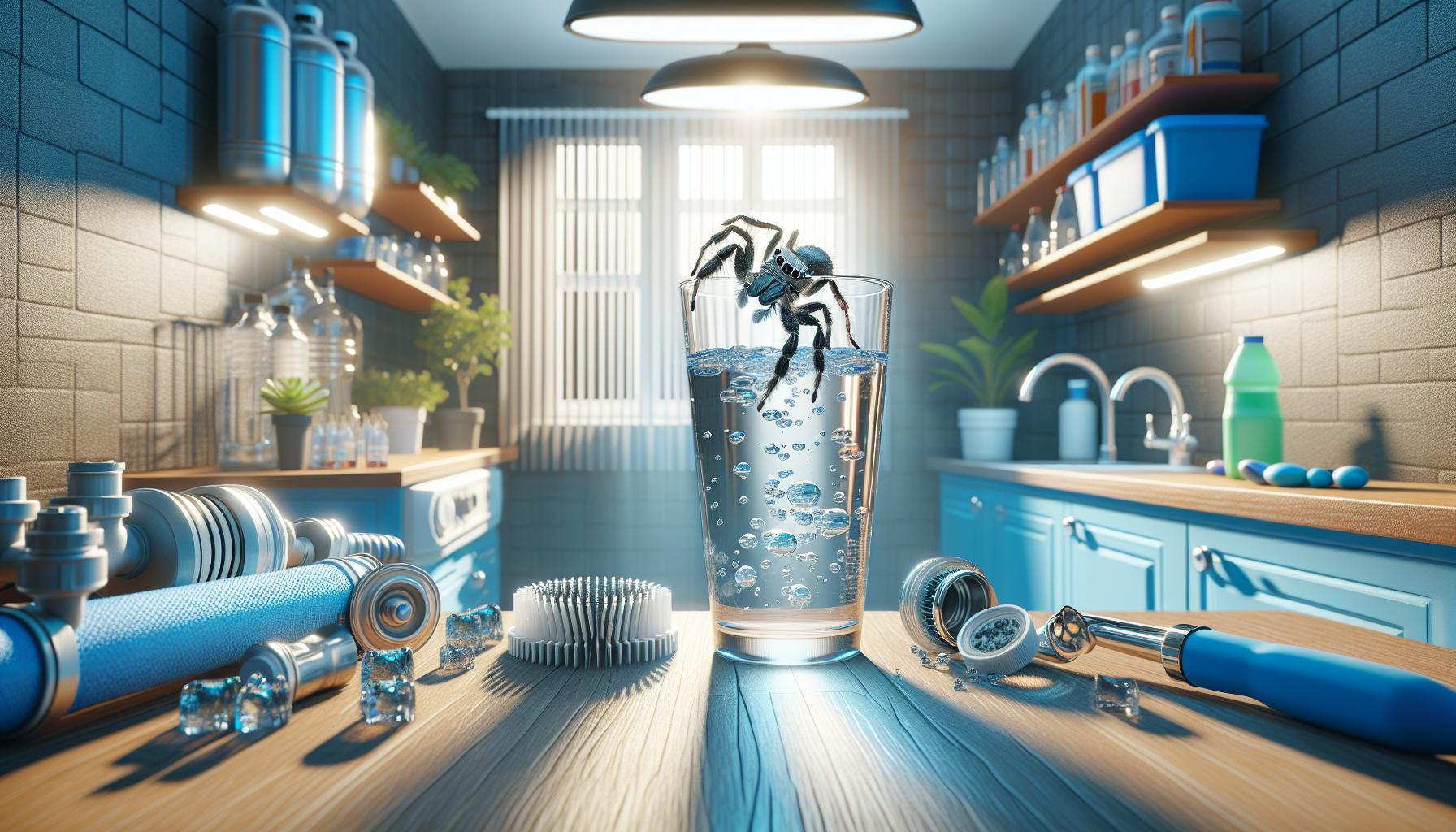
Understanding the Hydration Needs of Jumping Spiders
Jumping spiders, known for their remarkable agility and vibrant appearance, have specific hydration needs that are crucial for their health and well-being. Unlike many other pets, these fascinating arachnids don’t consume water in the same manner as mammals. Instead, they primarily obtain moisture from their food sources, but understanding how to effectively provide hydration is essential for any owner looking to ensure their jumping spider thrives.
Hydration for jumping spiders can be achieved through several methods. It’s important to note that these spiders do not drink from standing water but prefer to consume water droplets. Owners can create a suitable environment by employing the following tips:
- Water Bowl: Place a small, shallow dish of water in the enclosure. While they may not drink directly from it, it serves as a source of humidity and can support moisture levels in the habitat.
- Water Droplets: Mist the enclosure lightly with water, allowing droplets to form on surfaces. This mimics natural conditions and enables jumping spiders to drink as they would in the wild.
- Humidity Levels: Maintaining appropriate humidity in the enclosure is vital. A modest range of humidity (around 50%-70%) is beneficial, enhancing the overall environment for your jumping spider.
Proper hydration not only contributes to the spider’s health but also aids in their molting process, which is critical for their growth and development. Dehydration can lead to serious health issues, such as difficulty in shedding their exoskeleton or a weakened immune system. Owners should be attentive to their jumping spider’s behaviors, such as lethargy or a lack of appetite, which may indicate hydration problems.
To create an optimal living environment for your jumping spider, consider monitoring the enclosure’s humidity and ensuring it reflects their natural habitat. This simple yet important aspect of care is vital in answering the broader question: do jumping spiders need water? The answer is a resounding yes, and understanding their hydration needs will contribute significantly to their overall care and longevity.
How Jumping Spiders Obtain Water in Their Natural Habitat
Jumping spiders, known for their remarkable agility and excellent vision, have adapted unique methods to obtain water in their natural habitats. These small yet fascinating arachnids primarily reside in environments such as gardens, forests, and grasslands, where they encounter various sources of moisture necessary for survival. Unlike many other spider species, jumping spiders do not make webs to capture rain or dew; instead, they rely on their ability to hunt and forage actively for hydration.
In the wild, these spiders often collect moisture from several key sources. One of the main ways they obtain water is through drinking droplets from leaves and plants after rainfall or dew formation. This behavior not only serves as a drinking source but also helps them regulate their hydration levels, which is crucial for their overall health and hunting efficiency. Moreover, the presence of humidity in their habitat plays a vital role, as higher humidity levels naturally provide moisture in the air, which can be absorbed through their exoskeletons.
Practical Drinking Strategies
Jumping spiders can also benefit from the microhabitats they inhabit. For example, they may find moisture in organic debris or the moist areas around plants. They have been observed drinking from water droplets that collect on foliage or even taking in water from prey, which may contain moisture. This adaptability in resourcefulness highlights how they thrive in various ecosystems while matching their hydration needs with the availability of water.
Creating a suitable environment for pet jumping spiders mimicking these natural hydration methods is critical for their care. Owners can provide small dishes of water, like bottle caps, to ensure direct drinking sources while also enhancing humidity in their enclosures. Additionally, introducing live plants into the habitat can create conditions favorable for dew formation, allowing spiders to drink from the droplets found on those surfaces. This not only ensures a consistent water supply but also enriches their living space, promoting a more natural and stimulating environment.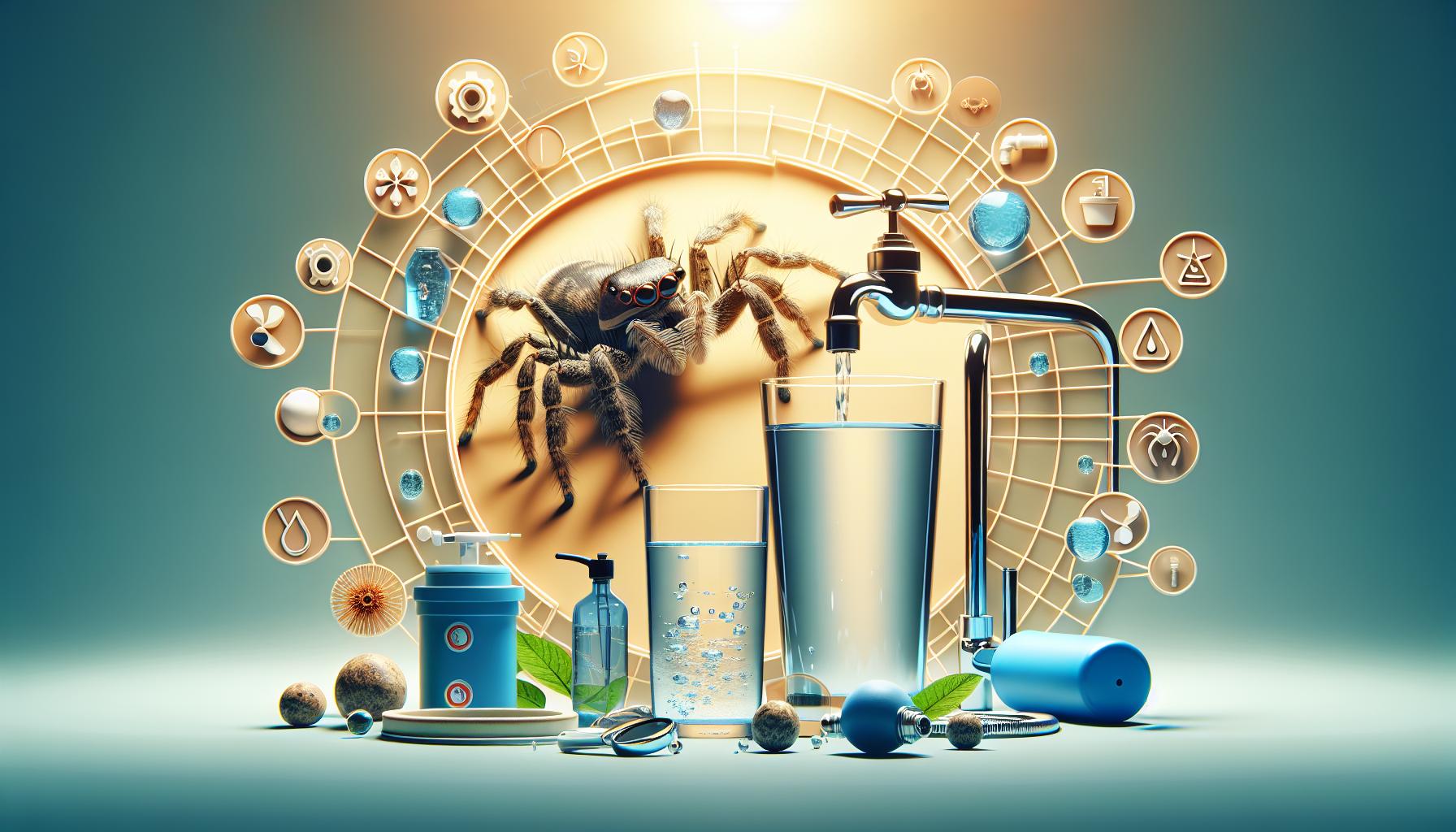
The Best Ways to Provide Water for Your Jumping Spider
Providing the right sources of hydration for your jumping spider is essential for its well-being. These fascinating creatures do require water, but they have unique drinking habits that differ from many other pets. Understanding the best methods to ensure they stay hydrated not only fosters a healthy environment but also enhances your experience as a spider owner.
Misting as the Ideal Method
One of the most effective ways to provide water for your jumping spider is through misting its enclosure. This method involves lightly spraying water onto one side of the habitat 2-3 times a week. The fine droplets settle on the walls and objects within the enclosure, allowing your spider to drink when it needs to. It’s crucial to use a suitable water source, such as purified or distilled water, to avoid any harmful additives often found in tap water. Misting not only supplies water but also helps maintain humidity levels, which is beneficial for your spider’s environment and lifespan [[3]].
Using Shallow Water Dishes
Another practical option is to provide a shallow dish filled with water. This dish should be shallow enough to prevent the spider from drowning, with just a few millimeters of water. Many owners find that adding a piece of cotton wool or a sponge can help, as this gives the spider a safer surface to stand on while drinking. Make sure to change the water regularly to prevent any contamination that could harm your spider’s health [[1]].
Monitoring Hydration
It’s important to observe your jumping spider’s behavior to ensure it is adequately hydrated. Signs of dehydration can include lethargy, lack of movement, or dryness around the eyes. Regularly misting and providing a water dish can prevent these issues, but be sure to adapt your approach based on the climate in your home, as temperature and humidity can influence your spider’s hydration needs.
Implementing these practical methods of providing water will help you create a nurturing environment for your jumping spider. By utilizing misting and shallow water dishes, you can easily meet its hydration needs while contributing to its overall health and happiness.
Common Mistakes in Spider Hydration and How to Avoid Them
Understanding the hydration needs of jumping spiders is essential for ensuring their health and longevity. Despite being fascinating and hardy creatures, many new owners make critical errors when it comes to providing proper hydration. These mistakes can lead to various health issues, influencing a spider’s overall well-being, longevity, and ability to thrive in captivity.
Over-Reliance on Substrate Moisture
One common error is assuming that substrate moisture is sufficient for hydration. While jumping spiders do gain some moisture from their environment, they cannot rely solely on damp substrate. It’s vital to provide a direct water source. This can be achieved by lightly misting the enclosure or offering a shallow dish with fresh water. Remember that jumping spiders are more likely to drink from droplets rather than still water, so misting can be an effective strategy.
Neglecting Environmental Factors
Another frequent oversight is neglecting the role of humidity and temperature in a jumping spider’s habitat. Maintaining appropriate humidity levels is crucial for effective hydration, as it impacts their metabolism and general health. Owners should aim for humidity levels between 40-60%. Using a hygrometer can help monitor these levels effectively. Adjusting humidity can be as simple as increasing misting frequency or using a small humidifier in the room.
- Check water source daily: Ensure water is clean and available at all times.
- Avoid overmistings: Too much moisture can lead to mold and health risks.
- Provide proper ventilation: Maintain airflow to prevent excess dampness.
Ignoring Signs of Dehydration
Finally, many owners fail to recognize the signs of dehydration in jumping spiders. A lack of water can lead to lethargy, a dull appearance, and decreased activity levels. If a spider is not consuming its usual prey or has become less active, it may be time to evaluate hydration practices. Offering a variety of moisture-rich prey, such as fruit flies or small crickets, can also supplement their water intake.
By understanding these common hydration mistakes and how to avoid them, owners can ensure that their jumping spiders lead healthy, active lives. Proper hydration is not just a necessity but a foundation for a vibrant and thriving pet spider.
The Role of Humidity in Jumping Spider Care
When it comes to providing the best care for your jumping spider, understanding the critical role of humidity is essential. Unlike some pet species that require extensive water supplies, jumping spiders thrive in environments with specific humidity levels that mimic their natural habitats. Proper humidity not only supports their hydration needs but also aids in their molting process—a key aspect of their growth and health.
Why Humidity Matters
Jumping spiders, like many other arachnids, rely heavily on humidity for a variety of physiological functions. A humidity level of around 60-70% is generally considered ideal. Too little humidity can lead to dehydration, which poses a significant risk to their well-being, while overly damp conditions can result in respiratory issues and mold growth within their enclosure. Maintaining a balanced humidity level is crucial for your spider’s health, ensuring they remain active and vibrant.
- Dehydration Risks: Insufficient humidity can lead to decreased activity, lethargy, and even death.
- Respiratory Problems: Excessive humidity can increase the risk of mold and respiratory complications.
- Molt Success: A stable humidity level is critical during molting, preventing stuck exoskeletons and enabling proper growth.
Maintaining Optimal Humidity Levels
To achieve and maintain the right humidity levels in your jumping spider’s enclosure, consider the following steps:
| Method | Description |
|---|---|
| Misting | Lightly mist the enclosure daily or every few days, depending on humidity levels. |
| Hygrometer Usage | Use a hygrometer to monitor the humidity level accurately, adjusting misting frequency as needed. |
| Substrate Choice | Use a substrate that retains moisture, such as coconut fiber, to help maintain humidity. |
| Ventilation | Ensure good ventilation to prevent excessive moisture buildup while maintaining adequate humidity. |
By paying careful attention to humidity and using the methods outlined, you can create a healthy habitat that meets your jumping spider’s needs. This simple yet vital aspect of care can make a significant difference in their health and longevity, affirming that indeed, understanding how to maintain humidity is a key takeaway for anyone asking, “Do jumping spiders need water?” Care tips like these are invaluable for ensuring your pet thrives in its environment.
Signs That Your Jumping Spider is Dehydrated
Jumping spiders, like all arachnids, require proper hydration to thrive, and recognizing the signs of dehydration is crucial for their well-being. While these spiders may seem resilient, inadequate moisture levels can lead to serious health issues, including lethargy and even death. As a pet owner, understanding the early warning signs can help you take proactive steps to ensure your jumping spider remains healthy and active in its habitat.
One of the first indicators of dehydration in a jumping spider is its behavior. A spider that is not moving around as much as usual or seems to be less active can be a red flag. Take note if your jumping spider is struggling to jump or if its movements appear sluggish. Additionally, you may notice that it spends more time in one place rather than exploring its enclosure.
Symptoms to observe include:
- Sunken abdomens: A noticeably shriveled or sunken abdomen is a typical sign that your spider needs a moisture boost.
- Change in webbing: If your spider has typically been a diligent web builder but has stopped, this could indicate it’s conserving energy due to dehydration.
- Faded colors: Healthy jumping spiders usually have vivid colors; a dull or faded appearance suggests poor hydration.
- Refusal to eat: A dehydrated spider may lose interest in food, which is a concerning sign and merits immediate attention.
To combat dehydration, ensure that your spider’s habitat has the appropriate humidity levels. Regularly misting the enclosure can help maintain moisture in the air, and providing a proper diet rich in live insects can provide additional hydration. Jumping spiders draw moisture from their food, so offering prey that is not only nutritious but also contains water can bolster their hydration needs.
Taking these signs seriously and acting promptly can help mitigate the potentially severe consequences of dehydration, ensuring that your jumping spider remains an active and engaging companion. For further insights on keeping your spider well-hydrated, refer to comprehensive care guidelines tailored for owners of these fascinating creatures.
Creative Solutions for Creating a Hydration Station
Creating an effective hydration station for jumping spiders is crucial for their health and well-being. Unlike many other pets, jumping spiders need a specific humidity level to thrive, as they rely on moisture to hydrate themselves and assist in molting. An innovative and practical solution can make a significant difference in your spider’s habitat, helping maintain the necessary conditions.
Magnetic Water Dispensers
One popular option is a magnetic hanging water dispenser, which can be easily attached to the side of the enclosure. These dispensers provide a small amount of water that is accessible to the spider while preventing drowning and keeping the area clean. Some dispensers even come with additional tools like cleaning brushes and tweezers, making maintenance simpler. For example, the Jumping Spider Water Dispenser available on Amazon holds about 8ml of water and is specifically designed to meet the needs of jumping spiders and arboreal animals [[1]](https://www.amazon.com/Jumping-Spider-Water-Dispenser-Accessories/dp/B0DNSDGQKB).
Humidity-Enhancing Features
Maintaining optimal humidity can be aided by strategic placement of water dishes or humidity-boosting items. Placing the dispenser on an elevated surface can help maintain the humidity level within the enclosure, as the water will naturally evaporate and increase moisture in the air. Additionally, incorporating a small sponge or a piece of damp moss can help retain moisture for longer periods, creating a microenvironment suitable for hydration.
Hide-Duration Stations
Combining hydration with a hiding spot enhances the spider’s comfort and security. A dual-purpose fixture, like the “Hide-Dration Station,” offers access to water while providing a cozy hideout. This setup not only meets the hydration needs but also allows jumping spiders to feel safe, which is vital for their overall health [[3]](https://www.etsy.com/listing/1735905950/jumping-spider-hide-dration-station).
In summary, establishing a hydration station for jumping spiders involves utilizing creative solutions like magnetic water dispensers, strategically placed humidity aids, and multi-functional setups that promote both hydration and security. By carefully considering these aspects, owners can ensure that their jumping spiders remain healthy and well-hydrated, echoing the essential care tips that every spider owner should embrace.
Tailoring Water Supply to Different Species of Jumping Spiders
Understanding the hydration needs of jumping spiders can significantly enhance their care and well-being. Unlike many other pet species, these fascinating arachnids possess a remarkable ability to source their moisture from various environments. Ideally, providing a tailored water supply is not just about keeping them hydrated; it can also prevent potential health issues associated with improper water sources.
Water Sources for Different Species
Jumping spiders thrive in diverse habitats, which influences their drinking preferences. Here are some common sources of water suitable for various jumping spider species:
- Dew Drops: Many species naturally consume moisture from morning dew, making it an excellent model for replicating their environment.
- Rainwater: Collecting rainwater can be a pure and chemical-free option, favored by numerous arachnids.
- Tap Water: While some may use tap water, it’s essential to be cautious. Chemicals like chlorine and chloramine found in municipal supplies can pose health risks to jumping spiders, particularly in sensitive species [[2]](https://enviroliteracy.org/animals/is-tap-water-safe-for-jumping-spiders/).
Effective Hydration Techniques
To ensure your jumping spiders receive the right amount of hydration, consider the following methods tailored to their species:
- Moist Cotton Swabs: Dip a cotton swab in water and present it to your spider. Some may prefer to drink directly from it, while others may shy away if they aren’t thirsty [[3]](https://www.reddit.com/r/jumpingspiders/comments/sixg9s/how_do_you_all_give_your_spider_water/).
- Moistening Substrates: Regularly misting the substrate in the enclosure can create a humid environment that encourages drinking.
- Water Dishes: A shallow water dish can also be effective, provided it is cleaned frequently to prevent mold and bacteria growth.
Chemical Contaminants
Be mindful of the water’s purity. If using tap water, consider letting it sit for 24 hours to dissipate some of the chlorine before offering it to your spider [[2]](https://enviroliteracy.org/animals/is-tap-water-safe-for-jumping-spiders/). Monitoring the water supply and tailoring it based on species-specific needs is crucial for optimal health.
With the right approach to hydration, you can significantly improve the quality of life for your jumping spiders, ensuring they remain active and healthy, which aligns with the essential care tips for these remarkable creatures.
Frequently Asked Questions
Do Jumping Spiders Need Water?
Yes, jumping spiders do need water, but they receive most of their hydration from the food they consume. Proper care involves ensuring they have access to moisture-rich prey, such as live insects.
Jumping spiders thrive on a diet that includes insects, which provide a significant amount of moisture. However, providing a small water source, like a shallow dish with dechlorinated water, can be beneficial, especially in dry environments.
How Often Should You Mist a Jumping Spider?
It is generally recommended to mist a jumping spider’s enclosure every 2 to 3 days. This helps maintain humidity and provides a refreshing environment for your spider.
Over-misting can lead to mold growth and damp conditions, which are not ideal for jumping spiders. Use a fine mist to lightly dampen the enclosure on the recommended schedule for optimal care.
What is the Best Way to Provide Water for Jumping Spiders?
The best approach is to provide water indirectly through misting and feeding moist prey. You can also offer a tiny bowl of water in the cage.
Ensure that the water bowl is shallow to avoid drowning hazards. Replace the water daily and keep an eye on the spider’s hydration based on its activity levels and coloration.
Can I Use Tap Water for My Jumping Spider?
It’s best to avoid tap water due to potential chemicals such as chlorine. Instead, use dechlorinated water or bottled water.
Chlorine and other additives found in tap water can be harmful to jumping spiders. Always allow tap water to sit for 24 hours before using it for misting or in bowls to help chlorine evaporate.
Why Does My Jumping Spider Seem Dehydrated?
A jumping spider may appear dehydrated due to insufficient humidity or lack of moisture in its diet. Ensure you are providing both food and water appropriately.
Signs of dehydration may include lethargy or a dull appearance. Regularly misting and offering live insects can help maintain proper hydration levels.
Do Jumping Spiders Need a Humid Environment?
Yes, jumping spiders prefer a slightly humid environment, typically around 40-60% humidity. This is crucial for their hydration.
Maintaining proper humidity levels can prevent dehydration and encourage healthy molting. Use a hygrometer to monitor humidity and adjust your misting schedule accordingly.
How Can I Tell if My Jumping Spider is Hydrated?
A hydrated jumping spider will be active, display bright colors, and have a firm body. Signs of hydration problems can include lethargy or dullness.
Monitoring your spider’s behavior and appearance can help you assess its hydration status. Always provide adequate moisture through food and misting to keep your spider healthy.
Is It Safe to Keep Jumping Spiders in Glass Containers?
Yes, glass containers are safe for jumping spiders as long as they have proper ventilation and adequate space for movement.
Ensure the enclosure allows for humidity control through proper ventilation. Adding plants or substrates can help create a more natural habitat.
Final Thoughts
In conclusion, understanding the water needs of your jumping spider is crucial for their health and well-being. These fascinating creatures primarily hydrate through their food, but providing a shallow water source can help maintain optimal humidity levels and ensure their comfort. Remember to avoid excess moisture that could lead to mold or health issues. For further insights on creating the perfect environment for your jumping spider, consider exploring related articles about their feeding habits, habitat setup, and overall care. By staying informed, you can confidently provide the best care for your eight-legged companion!

